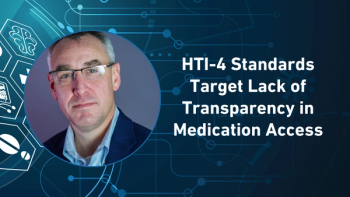
Advancing PV Operations and Patient Safety through Innovation
How digital adoption is driving pharmacovigilance
Pioneering advancements in pharmacovigilance (PV) technologies are key to unlocking the next level of patient outcomes in the life sciences industry. Companies are noticing and leading initiatives to adopt intelligent automation and analytics technology in record numbers. As one example, artificial intelligence (AI) in the drug discovery market will expand at an estimated compound annual growth rate (CAGR) of
Why does this matter? According to the International Data Corporation (IDC),
More efficient PV through automation
Rising case volumes require organizations to find ways to make their processes more efficient. Simply adding more human resources is no longer a sustainable solution.
Many organizations are turning toward intelligent automation and AI to enable this. Key examples include:
- Robotic process automation (RPA): Automates manual, repetitive steps in cases where human intervention and decision-making are not typically required.
- Rule-based automation (RBA): Applies man-made rules to store, sort, and manipulate data.
- Natural language processing (NLP): Understands and analyzes partially structured or unstructured text documents and extracts key insights.
- Machine learning (ML): Draws inferences from patterns, and learns and adapts without following specific instructions.
Together, these types of automation and AI all provide increased efficiency, as well as greater process consistency and data quality. Rather than replace human work, they remove repetitive tasks and added work from professionals’ workflows, enabling them to make better decisions and do their jobs better. They also empower organizations to shift human resources to higher-value initiatives and transform safety from a cost center to a strategic value pillar.
Driving strategic value through data and analytics
Another initiative organizations take to transform safety into a strategic value pillar is drawing upon more robust data sources and analytics tools that are now available.
Life sciences organizations have more data at their fingertips now than ever before. As case volumes rise, the number of internal and external data sources grow, and technology stacks become more complex—it can be difficult to overcome data silos, detect patterns in these larger datasets, and extract strategic, actionable insights. Traditionally, life sciences organizations have been hesitant to tap into the full strategic value of their safety data for these reasons.
The recent COVID-19 pandemic, however, in which leading pharma were able to drive the swift creation and approval of multiple vaccines, created a new understanding of what tools were available and how organizations could leverage them. The landscape has begun to shift accordingly, as organizations start to leverage data and analytics to spearhead transformational outcomes.
Key competitive advantages firms are seeing from investing in data and analytics include:
- Driving efficiencies by understanding case management performance at a glance
- Proactively understanding and circumventing potential case processing bottlenecks
- Respond quickly to ad hoc requests for information
- Enable better decision-making by providing more seamless cross-functional insights
- Uncover hidden patterns in safety data and identify potential signals sooner
- Generate more robust and proactive benefit-risk profiles
The opportunity of RWE
Data is most valuable when it can be integrated and managed across different teams. The underlying architecture needs to connect safety data to medical affairs, regulatory, and clinical data, as well as with real-world evidence (RWE).
RWE, derived from analysis of real-world data (RWD), provides a particularly exciting opportunity for firms able to utilize it, allowing drug developers to study how patients use and respond to a drug by bringing in a wide array of post-market sources. Drug developers
- Electronic health records (EHRs)
- Claims and billing activities
- Product and disease registries
- Patient-generated data
- Social media
RWE—which provides insights into a broader group of patients—helps drug developers identify emerging risks and benefits, and also increases the robustness of a treatment’s safety profile. Historically, bringing together such large volumes of partially structured and unstructured data was too challenging, but now, with innovations in safety technology, it provides an exciting new pool of information to inform drug safety decisions.
Predictive, personalized patient safety
Every technological solution adopted by the life sciences industry has one core inspiration: patient safety.
The end goal is predictive, personalized safety. Automation brings a new level of predictability and efficiency that enables professionals to focus on more strategic, value-adding activities. By making it faster and easier to bring data together and detect patterns in that data, safety experts can more readily see potential risks, including hidden patterns previously undiscoverable through manual methods. The earlier safety teams can discover problems, the greater the chance they can reduce patients' risk.
Through a proactive approach to surveillance and PV, safety can better serve every individual patient. Early detection improves decision-making, allowing life sciences organizations to deliver drugs with more safety information than ever. With automation removing mundane process tasks like data entry, teams can also spend valuable time on analysis and facilitating actionable insights.
Take safety operations to the next level
Life science organizations may decide new, innovative technologies are the way forward for their safety teams; selecting and implementing a solution, though, is a different story. For true efficiency gains, organizations should seek a solution with mature, end-to-end automation and analytics capabilities, as well as a commitment to ongoing safety innovation.
By selecting a solution that provides automation and analytics across the safety spectrum, organizations arm their workforce with a powerful tool to evolve and drive the safe development of therapies worldwide.
About the Author
Beena Wood is Vice President of Safety at
Newsletter
Stay ahead in the life sciences industry with Pharmaceutical Commerce, the latest news, trends, and strategies in drug distribution, commercialization, and market access.





